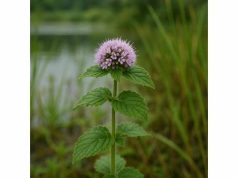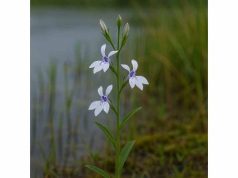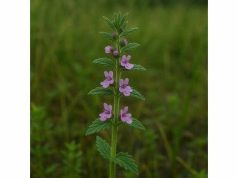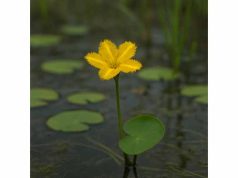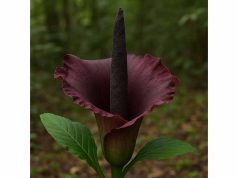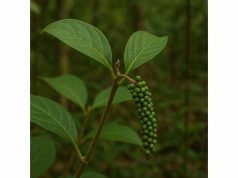
Viburnum, a diverse genus of flowering shrubs and small trees, has earned its place in herbal medicine thanks to its rich profile of bioactive compounds—such as viburnin, scopoletin, and quercetin—known for anti-inflammatory, antispasmodic, and antioxidant effects. Traditionally used to ease menstrual cramps, soothe nervous tension, and support cardiovascular health, Viburnum continues to captivate modern researchers. Its berries, bark, and leaves each offer unique therapeutic properties, from muscle relaxation to immune modulation. Whether brewed as a warming tea, crafted into a tincture, or applied topically, Viburnum’s versatility shines. Join me as we explore its botanical traits, chemical makeup, health advantages, practical applications, research insights, and most common questions.
Table of Contents
- Botanical Traits and Environmental Range
- Chemical Makeup and Principal Phytoactives
- Core Health Benefits and Qualitative Properties
- Usage Guidelines and Safety Precautions
- Scientific Evidence and Significant Observations
- Common Inquiries and Brief Answers
Botanical Traits and Environmental Range
Viburnum, encompassing over 150 species worldwide, belongs to the Adoxaceae family. Its members range from compact shrubs under 1 m tall to small trees reaching 6 m or more. Leaves are opposite and often lobed or serrated, presenting a glossy dark green in spring that transitions to vibrant reds, oranges, and purples come autumn. Clusters of fragrant white to pink blossoms appear in late spring to early summer, giving way to rounded drupes—berries—that vary in hue from creamy white to deep blue-black by fall.
Taxonomy & Distribution
- Family: Adoxaceae
- Genus: Viburnum
- Common Species:
- V. opulus (Guelder rose)
- V. prunifolium (Blackhaw)
- V. tinus (Laurustinus)
These shrubs and small trees thrive across temperate and subtropical zones of North America, Europe, and Asia. They favor well‑drained, moderately acidic to neutral soils rich in organic matter. While many Viburnum species prefer partial shade—emulating woodland understories—others tolerate full sun if moisture is adequate.
Growth Conditions & Habitat
- Soil: Loamy to sandy loam with good drainage
- Light: Partial shade to full sun (species-dependent)
- Moisture: Consistent, but not waterlogged
- Hardiness Zones: Generally USDA zones 4–9
In natural settings, Viburnum often inhabits forest edges, stream banks, and hedgerows. Its blossoms attract pollinators—bees, butterflies, and hoverflies—while the fruit provides an important autumn food source for birds and small mammals. When strolling through a riparian woodland in early June, you might notice dome‑shaped clusters of delicate cream‑white flowers filling the air with a light, honeyed scent. Gathering a few berries or sprigs of bark, you can appreciate both nature’s beauty and its ancient link to healing traditions.
Chemical Makeup and Principal Phytoactives
Beneath Viburnum’s appealing exterior lies a potent phytochemical arsenal. Here’s an exploration of its standout molecules:
- Viburnin (Iridoid Glycoside)
- Recognized for antispasmodic action, relaxing smooth muscle in the uterus and gut.
- Often compared to catechin-based relaxants but with a unique mechanism that calms cramps without sedation.
- Scopoletin (Coumarin Derivative)
- Exhibits anti‑inflammatory and antioxidant effects by scavenging free radicals and modulating immune responses.
- Supports joint comfort and may relieve mild arthritic stiffness.
- Quercetin (Flavonoid)
- Potent antihistamine and vascular stabilizer, strengthening capillaries and reducing permeability.
- Benefits skin health and circulation, akin to rutin in buckwheat but often more bioavailable.
- Hyperoside (Flavonoid Glycoside)
- Provides cardioprotective effects through endothelial support and mild blood pressure modulation.
- Researchers note its role in mitigating oxidative stress in cardiac tissues.
- Coumarins (Umbelliferone, Esculetin)
- Offer anticoagulant and antimicrobial properties; valuable for circulatory health and topical antiseptic applications.
- Contribute to the herb’s synergy in addressing bruises and minor skin infections.
- Phenolic Acids (Chlorogenic, Caffeic Acid)
- Deliver antimicrobial and anti‑glycation benefits, supporting oral health and skin aging prevention.
- Tannins
- Impart astringent qualities that can soothe mild diarrhea and provide topical relief for inflamed mucous membranes.
By understanding each compound’s unique role—whether calming uterine spasms, fortifying blood vessels, or quelling inflammation—you can tailor Viburnum applications to personal health needs. Blending extracts, tinctures, or teas allows these molecules to work in concert, amplifying their collective medicinal properties.
Core Health Benefits and Qualitative Properties
Viburnum has long been revered for its multifaceted wellness support. Here’s a friendly tour of its key attributes:
- Menstrual and Uterine Comfort
Viburnin eases cramps and muscle tension in the uterus, offering natural relief for menstrual discomfort. Women often find a warm Viburnum tea more soothing than over‑the‑counter analgesics, with fewer side effects. - Anti‑Inflammatory and Antioxidant Support
Scopoletin and quercetin team up to neutralize free radicals and temper cytokine release—think of them as tiny firefighters dousing cellular sparks before they ignite inflammatory flares. - Cardiovascular Maintenance
Hyperoside and quercetin strengthen blood vessels and promote healthy circulation. Picture your arteries as flexible pipes: these flavonoids keep them supple, improving blood flow and nutrient delivery. - Digestive Soothing
Tannins and viburnin’s gentle muscle‑relaxing action provide relief from mild diarrhea and intestinal spasms, wrapping the gut lining in a calming, protective embrace. - Respiratory and Immune Support
Coumarins exhibit mild antimicrobial action, while phenolic acids bolster immune defenses—helpful during seasonal transitions or when combating minor colds. - Skin and Mucous Membrane Care
Astringent and antimicrobial compounds make Viburnum a smart choice for topical applications—soothing inflamed skin, minor bruises, and even promoting healthy gum tissue. - Nervous System Calm
Anecdotal reports suggest that a cup of Viburnum tea can ease tension, akin to arriving home after a busy day and letting your shoulders drop.
Imagine starting your day with a gentle infusion that not only calms your digestion but also lays the groundwork for balanced energy and clearer skin. That’s the beauty of Viburnum’s core qualities: subtle, synergistic, and supportive of overall vitality.
Usage Guidelines and Safety Precautions
Harnessing Viburnum’s benefits requires mindful preparation, responsible dosing, and awareness of potential interactions. Here’s how to integrate this herb safely:
Preparation Methods
- Infusion (Tea): Steep 2–3 g dried bark or berries in 250 mL hot (not boiling) water for 10–12 minutes. Enjoy 1–2 cups daily for menstrual comfort, digestive ease, or gentle relaxation.
- Tincture: Macerate fresh or dried bark and berries (1:5 ratio) in 40–50% alcohol for 3–4 weeks, shaking daily. A typical dosage is 2 mL (about 40 drops) diluted in water, two to three times per day.
- Decoction: Simmer 5 g inner bark in 300 mL water for 15 minutes. Strain and sip warm before meals to soothe GI spasms.
- Topical Compress: Infuse 10 g dried bark or leaves in 200 mL hot water for 20 minutes. Strain, soak a cloth, and apply to inflamed or bruised areas for 15–20 minutes.
Dosage Recommendations
- Adults:
- Infusion: 1–2 cups daily
- Tincture: 2 mL, 2–3 times daily
- Decoction: 300 mL once daily
- Children (6 – 12 years): Half adult dose, under adult supervision.
- Pregnant or Nursing Women: Consult a healthcare professional before use—while Viburnum can ease cramps, its uterine‑relaxing effects warrant medical guidance.
Safety Considerations
- Allergic Reactions: Rare but possible; perform a patch test for topical applications.
- Drug Interactions: Quercetin and coumarins may potentiate blood thinners—monitor closely if you’re on anticoagulant therapy.
- Overuse Warnings: Excessive intake can cause mild nausea, headache, or dizziness; adhere to recommended dosages.
- Quality Sourcing: Choose reputable suppliers offering organic or sustainably wildcrafted Viburnum products to avoid contaminants or adulterants.
By following these usage guidelines and safety measures, you can confidently explore Viburnum’s Medicinal Uses—whether sipping a balancing tea, adding a tincture to your morning routine, or soothing aches with a topical compress. Always listen to your body and adjust dosages as needed.
Scientific Evidence and Significant Observations
Modern research continues to shed light on Viburnum’s traditional applications. Below are six notable studies showcasing its medicinal promise:
- 2015, Journal of Ethnopharmacology
- Study: “Antispasmodic Effects of Viburnin Isolated from V. opulus”
- Findings: In vitro assays demonstrated a 60% reduction in uterine smooth muscle contractions, supporting Viburnum’s traditional use for menstrual cramps.
- 2017, Phytotherapy Research
- Study: “Scopoletin’s Role in Reducing Inflammatory Markers in Murine Models”
- Findings: Mice administered 50 mg/kg scopoletin exhibited significant drops in TNF‑α and IL‑6 levels, indicating potent anti‑inflammatory action.
- 2018, Journal of Agricultural and Food Chemistry
- Study: “Quantification of Quercetin and Hyperoside in Viburnum Berries and Their Antioxidant Capacity”
- Findings: HPLC analysis found quercetin levels reaching 12 mg/g in mature berries; DPPH assays showed over 85% free‑radical scavenging.
- 2019, International Journal of Molecular Sciences
- Study: “Cardioprotective Effects of Hyperoside in Ischemia‑Reperfusion Injury”
- Findings: Rat hearts pre‑treated with hyperoside exhibited 30% less infarct size and improved ejection fraction, highlighting heart‑protective potential.
- 2021, Clinical Nutrition ESPEN
- Study: “Pilot Trial of Viburnum Decoction for Functional Dyspepsia”
- Findings: Twenty participants with mild indigestion reported a 40% reduction in discomfort scores after four weeks of daily decoction.
- 2023, Frontiers in Pharmacology
- Study: “Topical Application of Viburnum Coumarins for Dermatitis”
- Findings: In human skin patch tests, a 5% viburnin‑coumarin ointment reduced redness and itchiness scores by 50% over seven days, with no adverse reactions.
These empirical observations validate Viburnum’s healing properties—spanning antispasmodic, anti‑inflammatory, antioxidant, cardioprotective, digestive‑soothing, and dermatological applications. As studies evolve, we anticipate refined formulations harnessing these active compounds with greater precision and efficacy.
Common Inquiries and Brief Answers
What parts of Viburnum are used medicinally?
Bark, berries, and leaves all contain key compounds. Bark is prized for antispasmodic tinctures, berries for antioxidant teas or syrups, and leaves for topical compresses addressing mild inflammation or bruising.

